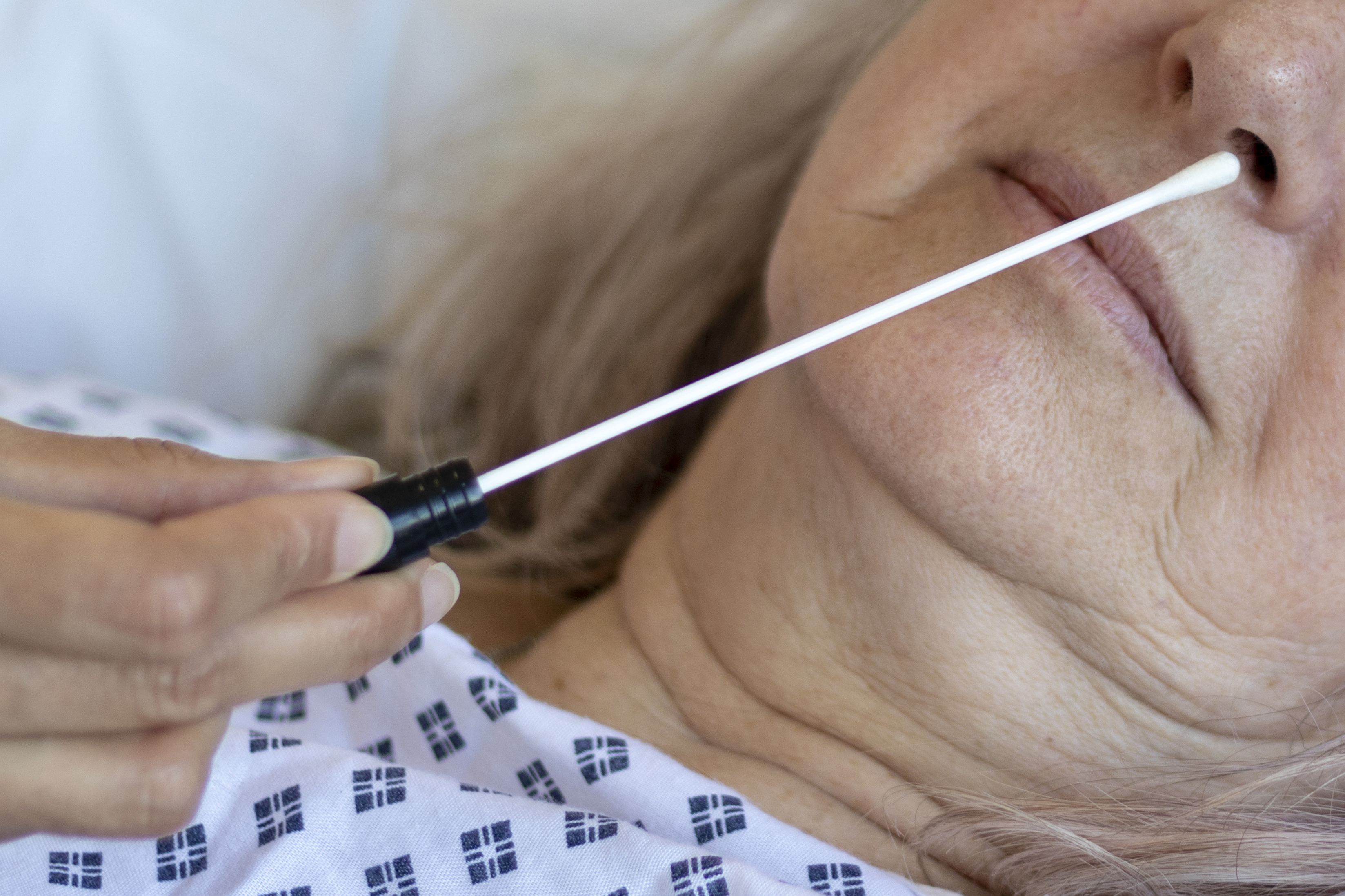The Alabama Department of Public Health’s most recent data shows that 1,116 more Alabamians have tested positive for the coronavirus, taking Alabama’s total number of cases up to 89,927. Particularly troubling are the rising cases in Alabama’s nursing homes and other long-term care facilities.
The department reported Monday that 3,968 residents of Alabama long-term care facilities have tested positive for the coronavirus since March. The rate of infections in long-term care facilities appears to be increasing at an alarming rate. Between April 6, when the ADPH first began reporting cases in long-term care facilities, and June 30, 2,242 residents of long-term care facilities had tested positive for the novel strain of the coronavirus, SARS-CoV-2.
That is a rate of 28 new cases in long term care facilities per day.
At least 1,526 residents have been diagnosed since July 1. That is a rate of 45 new cases in long-term care facilities per day. In just the last two weeks, 842 long-term care facility residents have tested positive for the coronavirus. That is a rate of 60 new cases per day.
{{CODE1}}
Because COVID-19 is particularly deadly to seniors, protecting seniors and people with pre-existing conditions has been a national priority since President Donald Trump announced the national public health emergency on March 12.
No one is more vulnerable than nursing home and long-term care facility residents. They typically are older than the general population and most have underlying medical conditions. Alabama Gov. Kay Ivey ordered that nursing homes be locked down on March 13.
Since then, visitors have not been allowed at most Alabama nursing homes, staff are temperature checked whenever entering the facility and getting personal protection equipment to the staff and nurses at long-term care facilities has been a priority.
“We’re deploying every tool, resource, and power at our disposal to protect our seniors and Americans of every age and background,” Trump said.
The problem is that while nursing home residents may live in isolation, the workers at long-term care facilities don’t live there. They go home to their families at the end of the workday — and with surging cases across the state, they contract the virus and, often without knowing it, bring it back to the facility where it spreads from resident to resident.
At least 2,210 workers at Alabama long-term care facilities have been diagnosed with the virus, and 1,582 were diagnosed by June 30 — at a rate of 18 new cases per day. Since July 1, 628 workers at long-term care facilities have tested positive for the coronavirus — at a rate of 18.5 cases per day. In the last two weeks, 250 long-term care workers have tested positive for the virus. That is a rate of 17.9 cases per day.
The long term care industry is requesting an additional $100 billion for the U.S. Department of Health and Human Services Provider Relief Fund, which is accessible for all health care providers impacted by COVID-19, and that a sizeable portion of the fund be dedicated to helping nursing homes and assisted living communities cover the enormous costs associated with protecting vulnerable residents and staff from the virus, including constant testing, personal protective equipment and staffing.
Currently, nursing homes have only received approximately 4.3 percent of the $175 billion funding allocated from the CARES Act Provider Relief Fund for healthcare providers. Meanwhile, assisted living communities have yet to receive any direct federal aid.
“With the recent major spikes of COVID cases in many states across the country, we are very concerned this trend will lead to a dramatic increase in cases in nursing homes and assisted living communities,” stated Mark Parkinson, president and CEO of the American Health Care Association and National Center for Assisted Living. “Without adequate funding and resources, the U.S. will end up repeating the same mistakes from several months ago. We need Congress to prioritize nursing homes and assisted living communities in this upcoming legislation.”
Last week, the AHCA/NCAL sent a letter to the National Governors Association warning states of imminent outbreaks at nursing homes and assisted living facilities given the major spikes in new cases in several states across the U.S., combined with serious PPE shortages and significant delays in getting testing results for long term care residents and caregivers.
“Given the fact we are several months into the response of this pandemic and the lack of PPE supplies is still an issue is very concerning,” Parkinson wrote. “We request governors and state public health agencies to help secure and direct more PPE supplies to nursing homes and assisted living communities.”
The state’s current death toll from COVID-19 is 1,580, and 89,927 Alabamians have tested positive for the coronavirus. Only 35,401 of those are presumed to have recovered. There are likely tens of thousands of Alabama residents who are infected, but who have not been tested. Many of these are asymptomatic, presymptomatic or have such mild symptoms that they may not notice they are ill.
A total of 711,317 tests have been reported to the Alabama Department of Public Health since March. Overall, 12.6 percent of those tests have been positive. But in the past two weeks, nearly 20 percent of the tests have been positive. Public health experts say that percentage — known as the positivity rate — should be below 5 percent; otherwise, cases are going undetected and not enough tests are available.
{{CODE2}}
The state is under a public health emergency. Gov. Kay Ivey and State Health Officer Dr. Scott Harris have issued a “safer-at-home” order that will be in effect through the end of August. If you must leave your home, you are required to wear a mask or cloth face-covering any time you are around other people.
Public health authorities are urging everyone to remember to socially distance. Don’t shake hands or hug people. Avoid sick people even within your home. Wash your hands frequently. Don’t touch your face. 158,757 Americans have already died from COVID-19.





















































